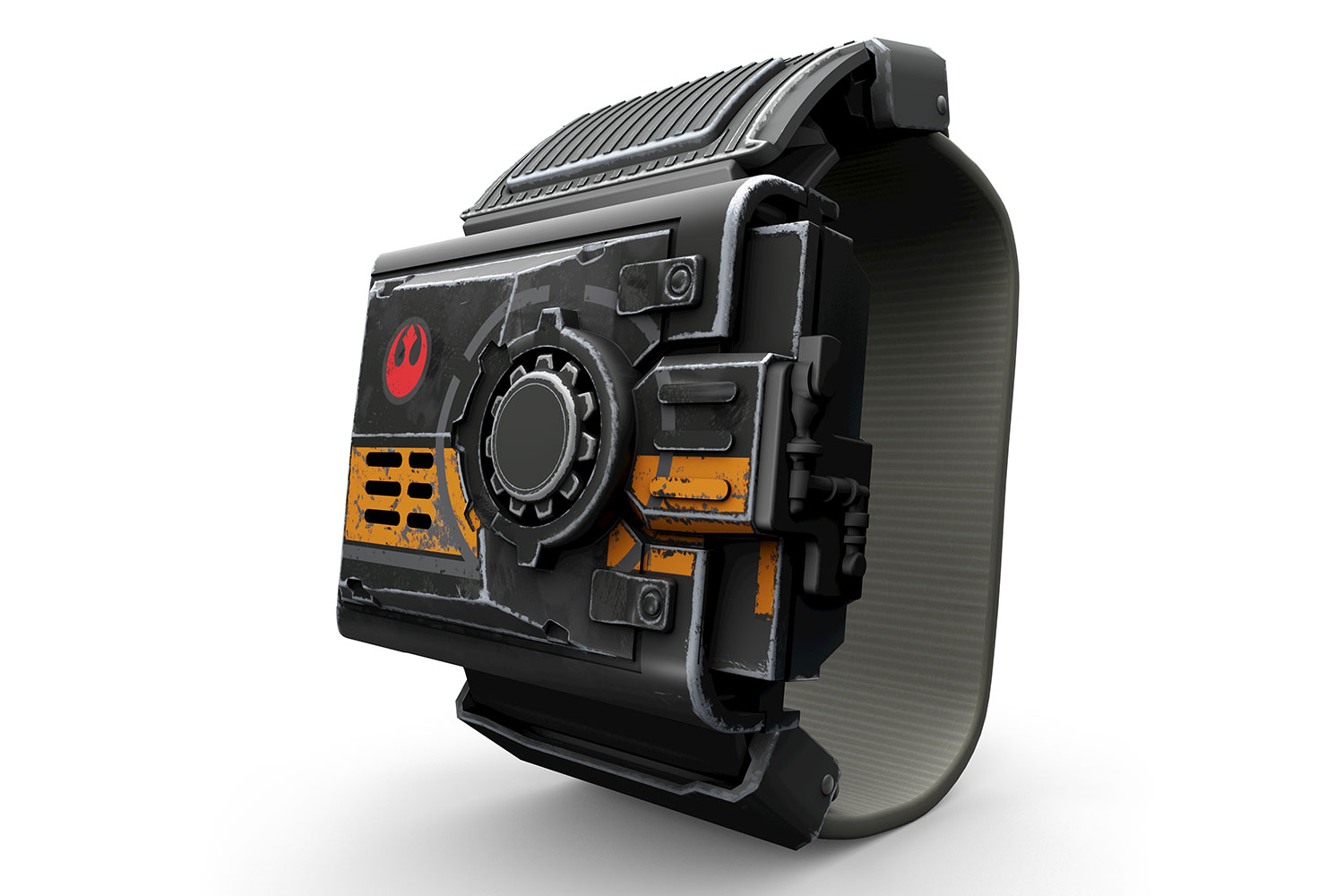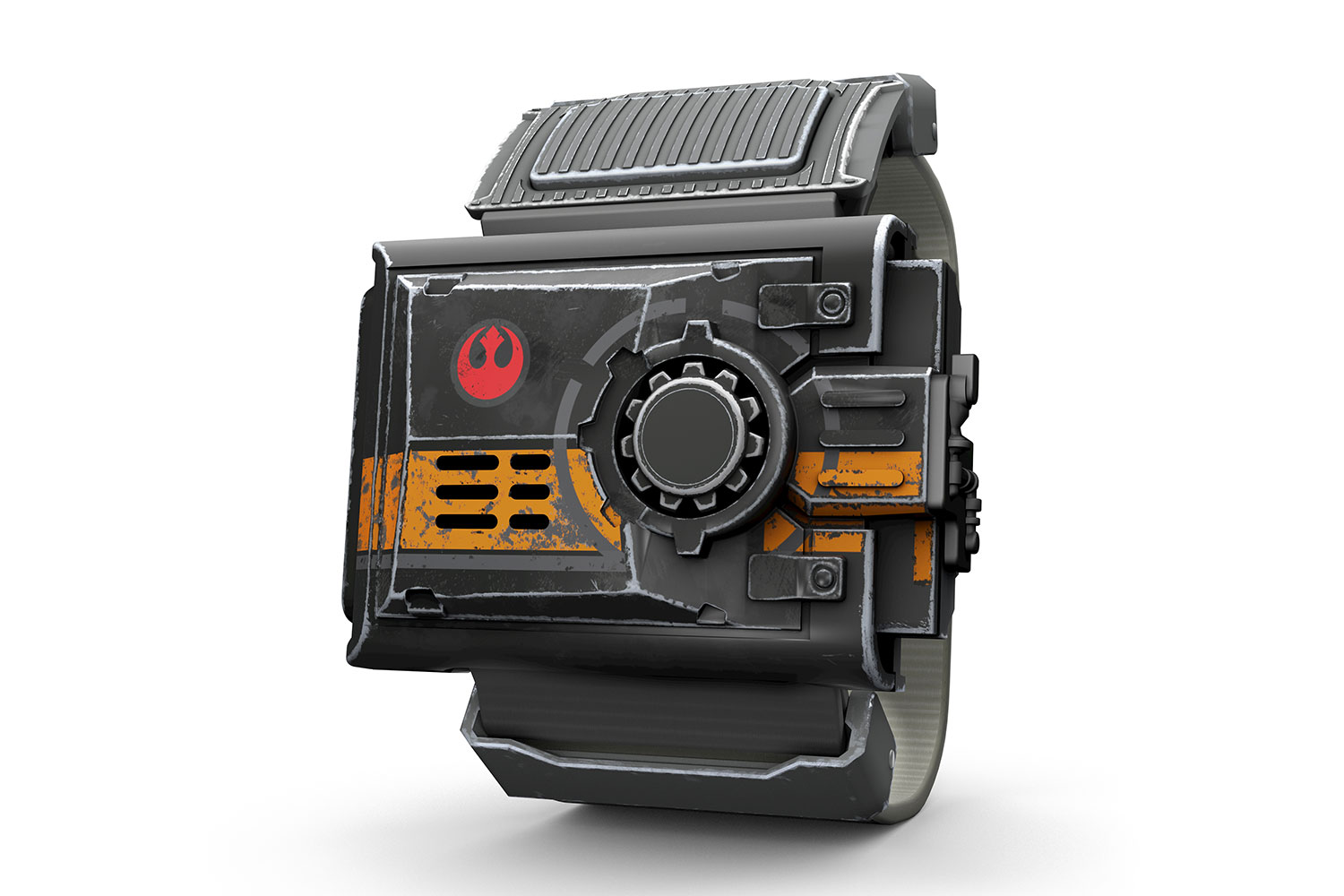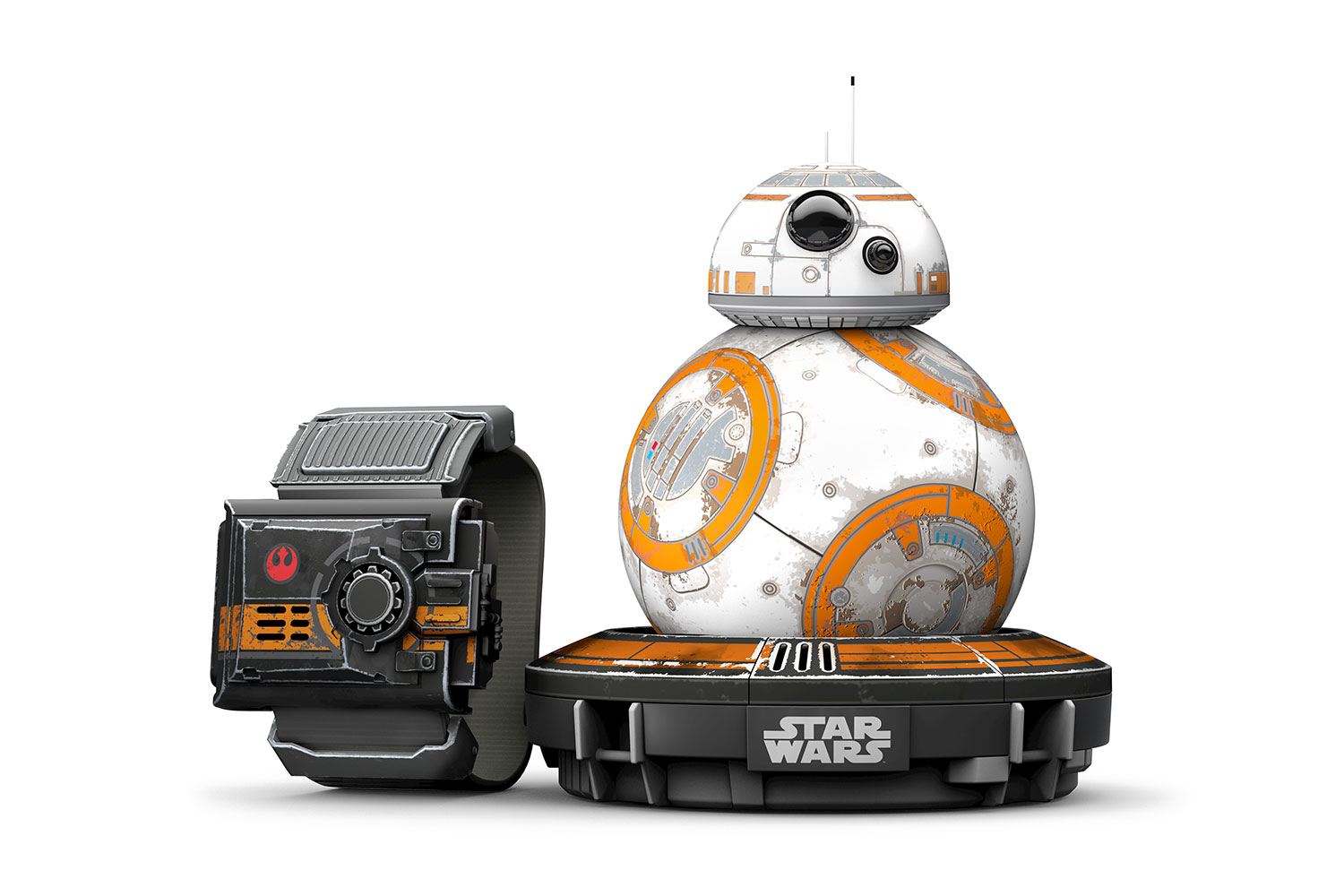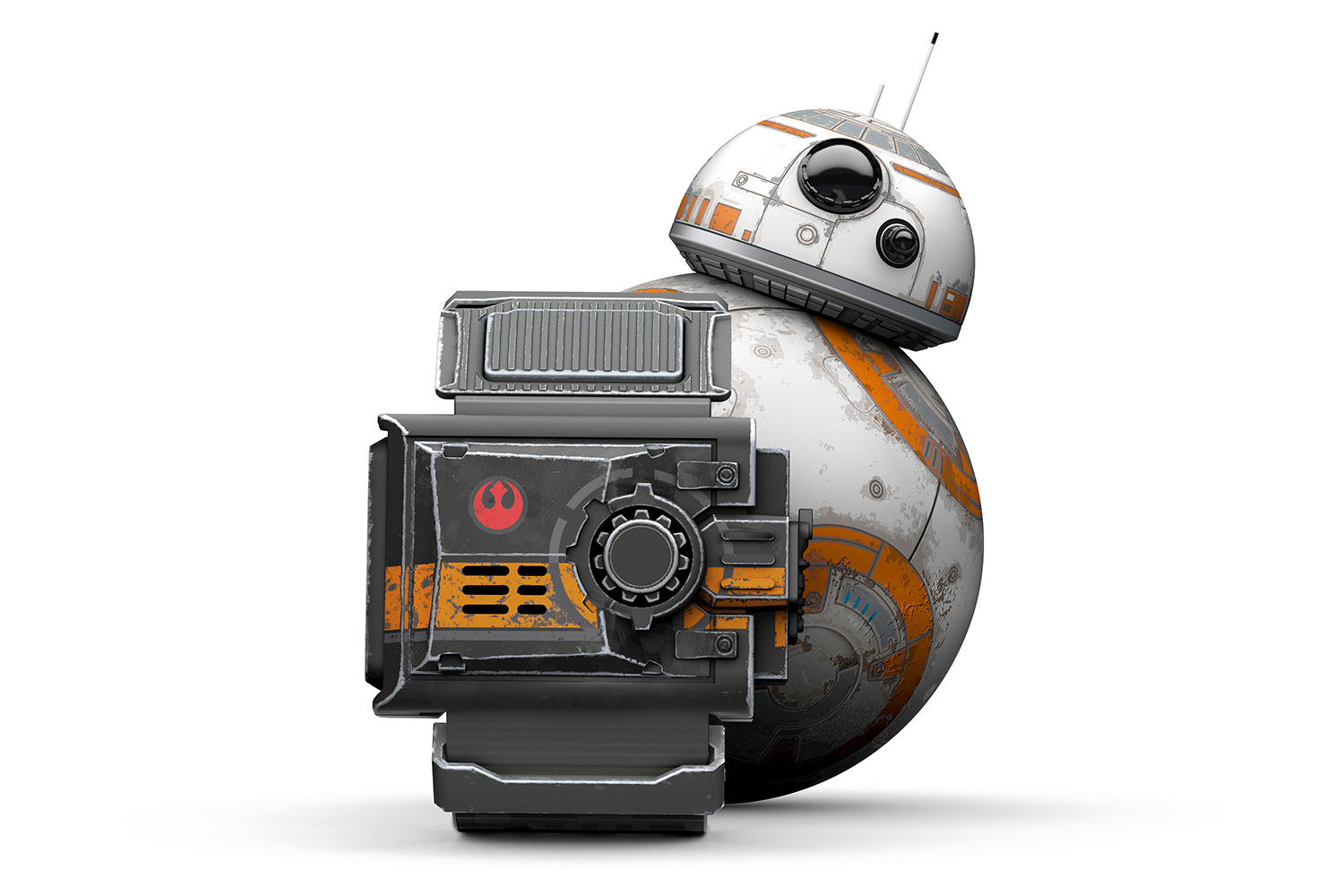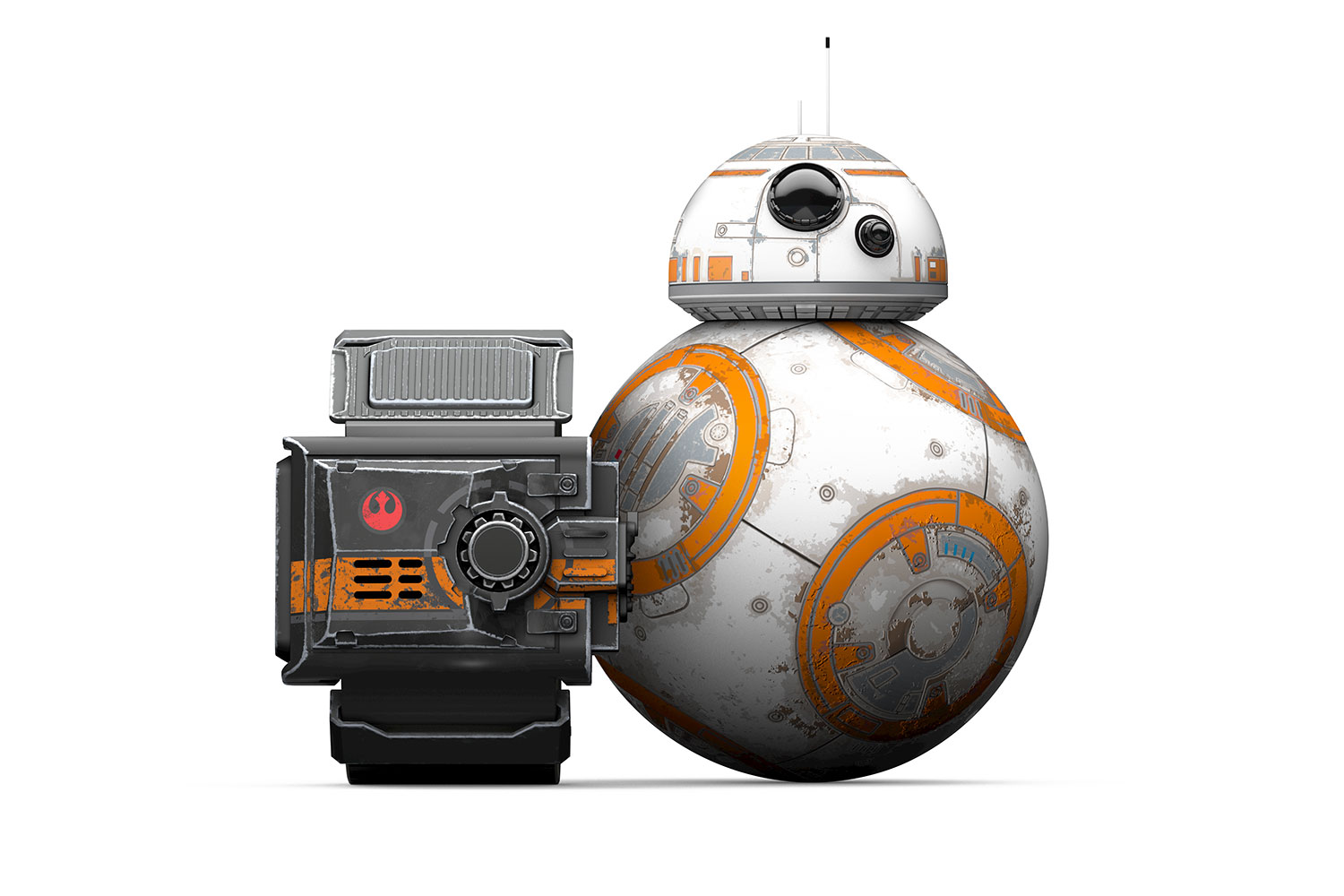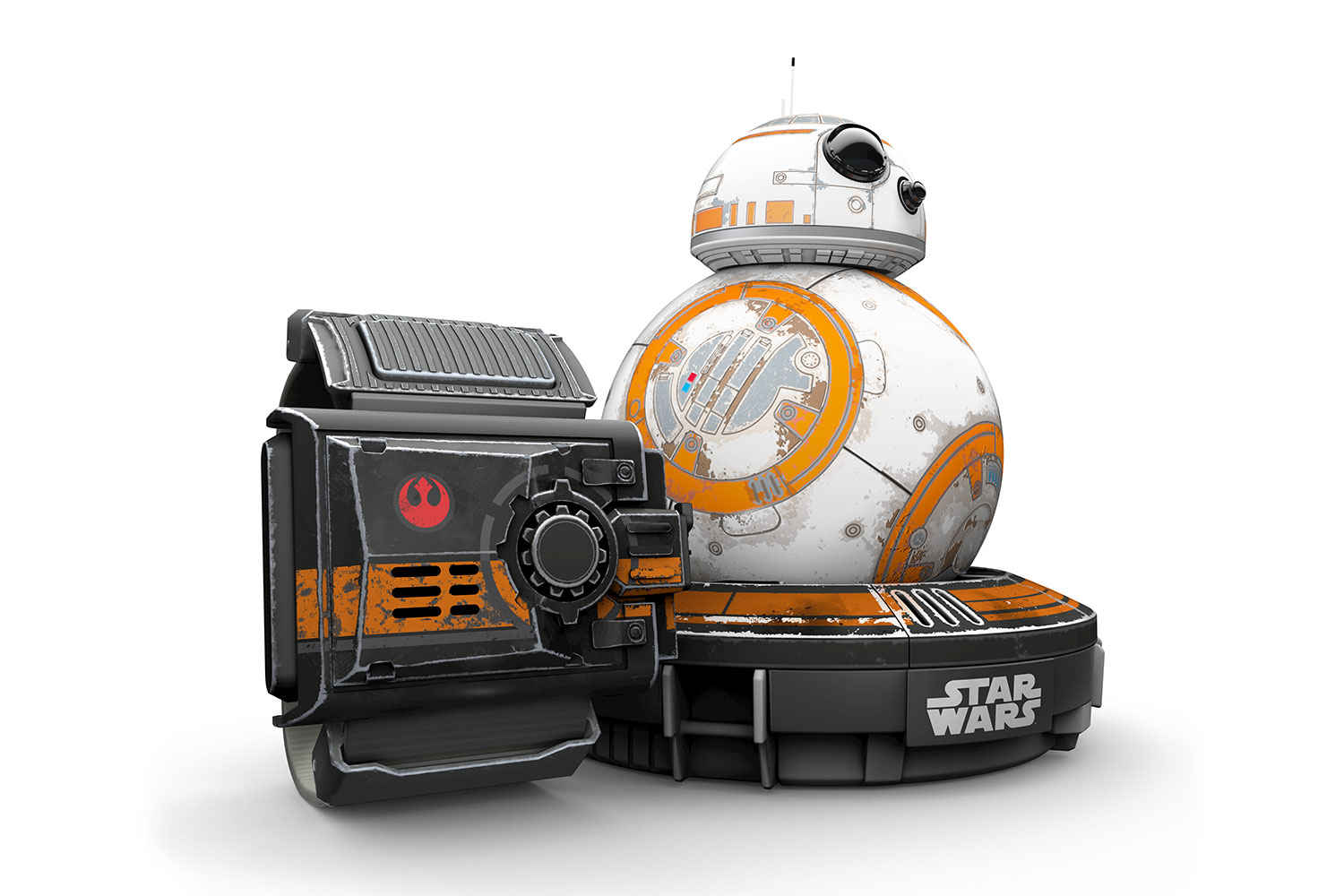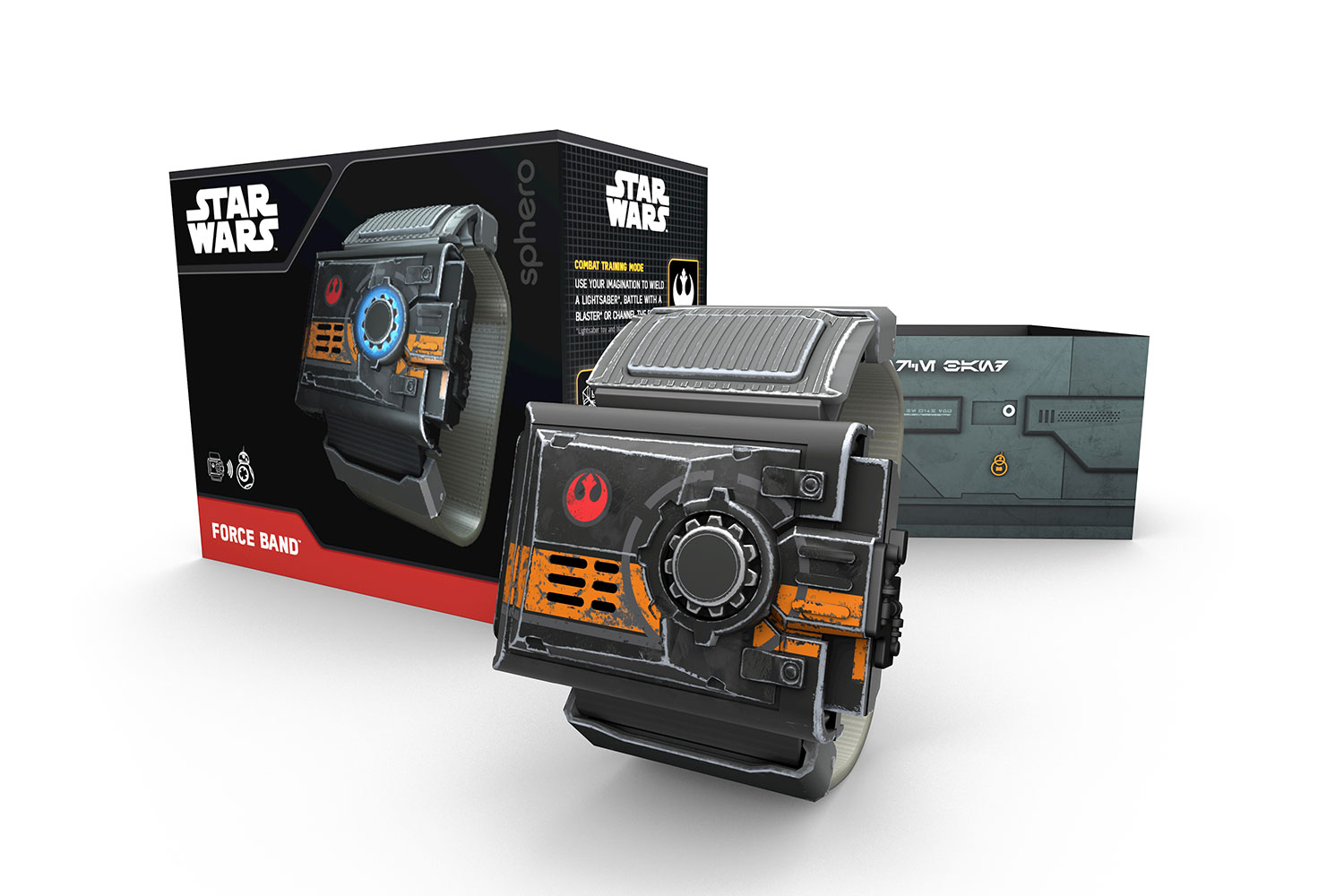If you’re gadget geek, Star Wars enthusiast, or (as is so often the case) a mixture of both, you’re probably familiar with the remote-controlled BB-8 drone that hit store shelves late last year. The motorized light-up, spherical toy is the product of Sphero, the Denver, Colorado-based startup behind the Sphero droid, Sphero Ollie, and Sphero Sprk+ Edition. And now, it’s gaining a galactic companion: the Force Band.
“We want to reinvent the way people play.”
The impetus, Sphero said, was unfinished business. The BB-8 is by far Sphero’s most successful product — last year on launch day, the company sold more than 2,000 of the $150 units “every hour.” But despite blockbuster sales and glowing reviews, the team couldn’t escape the nagging feeling that something fundamental was missing from the picture.
“The Force [in Star Wars canon, a life force that grants those attune supernatural powers] isn’t about … technology and Bluetooth,” Adam Wilson, Sphero’s co-founder and chief software architect, told Digital Trends. “It should be more magical than that,” he said. In other words, the firm felt BB-8’s electronics — i.e., the smartphone required to control it — were ruining the illusion they worked so hard to create.
Sphero’s solution, oddly enough, was more technology — but crucially, technology designed to blend into the background. The tech in question’s called the Force Band, and it’s a radically new way to control BB-8’s motions more intuitively and naturally than was possible before. “We want to reinvent the way people play,” Wilson said.
The Force is strong with this band
The Force Band is very “Star Wars” in appearance, at the very least. The defining geometry of the ruggedized plastic is angular, boxy, and concertedly utilitarian. The paint job, a militaristic mix of orange, red, and gun-metal silver, is speckled artificial scuffs and scratches. On the front is a sole, illuminated gear-shaped button, which serves as both an on/off switch and a “mode” selector (more on that later), and adjacent to it are grills for a loudspeaker. And other than a Micro USB port used for charging, that’s it.
Wielding the Force to do your bidding is a multi-step process, but the Force Band’s companion app (for iOS and Android) does an excellent job of bringing you up to speed. First, you clasp it to your wrist using the Velcro affixed to the rear casing. Next, you press the Force Band’s button to activate it — an audible chime and flashing lights indicate that it’s ready and waiting. Then, you let the Force Band’s voice prompts guide you through the rest.
“Chose your activity,” you’ll hear an Ewan McGregor imitator instruct. Take the bait, and you’ll be presented with three options: “Control Your Droid,” Combat Training, and Force Awareness Mode. The self-descriptive first lets you commandeer a BB-8 (and any off-the-shelf Sphero you happen to have lying about) with a combination of motion and gesticulations. Combat Training grants you soundscape superpowers: making gestures with your arms triggers an assortment of audio clips. Meanwhile, Force Awareness Mode engages a Pokémon Go-like augmented reality activity during which you can unlock new modes and special settings.
It takes training to control your droid
Control mode’s first up, and setting it up is relatively straightforward. Once you’ve selected the mode by tapping the band’s button, placing it within tapping distance of a BB-8 will pair the two via Bluetooth. Once that’s done and you’ve completed the all-important step of calibrating the Force Band (that is, pressing band’s button while it’s facing you), the paired droid is at the mercy of your motions.
It’s a fairly intuitive control scheme, but it’s admittedly a bit difficult to master. Pointing your palm upward causes BB-8 to drive forward while flipping your palm downward triggers the reverse. The speed of the droid corresponds roughly to the height of your hand from the ground: raising it increases BB-8’s velocity, and lowing it decreases it. Pushing the band away from your body sends the drone revving quickly in the direction you’re pointing while pulling it toward your chest recalls it. Tilting your wrist subtly to the left or right has it shift directions accordingly.
It sounds easy, in theory, but rare is the would-be Jedi who can master the Force Band on their first go — every Digital Trends staffer who gave the BB-8 a whirl had difficulty turning the droid controlling its speed. The companion app’s Force Training tutorial provides a few useful tips, but most found that the biggest improvements came from a few minutes of sustained practice. One even skillfully managed to maneuver BB-8 around table legs, a wayward hoverboard, and a foot-thick row of printer boxes.
The effect, in a word, is empowerment — especially when the Force Band emits sounds to accompany your flailing wrists (which can be disabled via the app, if you prefer). You won’t mistake the Force Band’s powers of manipulation for the Force of Star Wars lore, but using it quickly becomes the preferred method of controlling BB-8 — once you become used gesturing with the Force Band, returning to Sphero app’s touchscreen controls becomes an unappealing proposition.
The band is more than a remote
The Force Band is more than just a glorified remote, though. The aforementioned Force Awareness mode, an ambient game that tasks you with a search for Holocrons, or images of Star Wars characters. It’s ambient, for the most part — when you approach a nearby collectible — “disturbance in the Force,” as the app calls them — the Force Band vibrates. Collect enough to clear tiers of difficulty, and you’ll unlock in-app content like weapon noises and special features for use in Combat Training mode. It ramps up in difficulty: the more Holocrons you unlock, the more difficult rarer ones become to collect.

Combat Training is another component, and it’s essentially make-belief made real. Open the companion app, select a predefined weapon (e.g., a Bowcaster) or vehicle (e.g., an X-Wing) from the carousel of options you’ve unlocked in Force Awareness Mode, and the band will assume its characteristics sound effects. When you thrust your hand forward with the Bowcaster selected, for instance, the Force Band vibrates and emits a “laser fire” sound effect.
The Force Band is filled to the brim with electronics, including a 3-axis accelerometer and gyroscope. Despite all that power-sucking silicon, it’ll eek out “about two hours” of continuous play on a charge or two days on Force Awareness Mode, Wilson said. “We’re satisfied with [the] performance.”
The Force Band isn’t Sphero’s only new toy. Debuting alongside it’s a new BB-8 model that’s a bit more battle-worn in appearance than its predecessor. It’s available with the Force Band in a special edition bundle for $200, but the Force Band is also available separately for $80.
Sphero is continuing to improve its Force Band and helping users feel more and more like Jedi masters, most recently by adding IFTTT support, allowing users to control their smart homes by way of their gestures.
You can now create a custom applet by way of the IFTT mobile or desktop app, and choose whether a Force Push, Force Pull, or Force Stop will trigger an action. So heads up, Star Wars fans — this one is really for you.
Article originally published in September. Updated on 11-26-2016 by Lulu Chang: Added news that the Sphero Force Band now controls your smart home.





